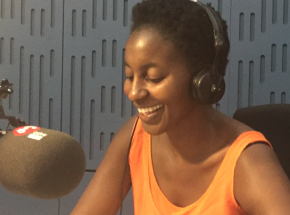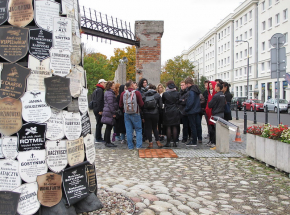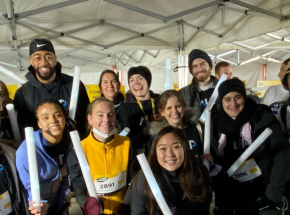- About AUP
- History of AUP
- Mission & Core Values
- Vision and Leadership
- AUP Recognition
- Alumni Success
- Campus Development
- Arts at AUP
- Policies & Guidelines
- Academics
- Undergraduate
- Graduate Programs
- MA in Diplomacy and International Law
- MA in Global Communications
- MSc in Human Rights and Data Science
- MA in International Affairs
- MA in International Affairs, Conflict Resolution, and Civil Society Development
- MSc in International Management
- MSc in Strategic Brand Management
- Find Your Thesis Advisor
- Previous Programs
- Cultural Program
- Faculty
- Summer School
- Research Centers
- The Center for Critical Democracy Studies
- Upcoming Events
- Research Projects
- Fellows’ Publications
- Publishing
- Curriculum
- Community
- Partnerships
- Visiting Scholars
- CCDS Highlights
- Atelier de Théorie Politique – Paris
- Critical Theory 101: Future Directions and New Challenges
- Martti Koskenniemi on “The Law of International Society: A Road not Taken”
- Academic Freedom Symposium
- Tocqueville Colloque 2023
- Violent Turns Conference
- Degenerations of Democracy
- DEMOS21 Inaugural Event
- What Demos for the 21st Century?
- The Paris Centennial Conference
- Justice Stephen Breyer
- Civic Jazz - The Launch of the Center
- Past Events
- FR
- The Center for Writers and Translators
- The George and Irina Schaeffer Center for the Study of Genocide, Human Rights and Conflict Prevention
- The Joy and Edward Frieman Environmental Science Center
- The Center for Media, Communication & Global Change
- The Center for Critical Democracy Studies
- Departments
- Academic Resources
- Academic Affairs
- Academic Calendar
- Academic Resource Center
- Library
- Registrar's Office
- Teaching and Learning Center
- Accessibility & Accommodation Services
- AI@AUP: A Campus-Level Initiative
- Quai D'Orsay Learning Commons
- Paris as Classroom
- ACE
- Admissions
- Student Life
- Campus
- Student Leadership & Involvement
- Paris
- Support Services
- Student Life Help Desk
- Student Accounting Services
- Student Immigration Services
- Student Grievance Procedure
- Diversity and Inclusion
- Health & Well-being
- Digital Student Handbook
- News
- Events
- AUP Giving
- Housing Offer for 2025-2026
- IT Services
- Alumni
- About AUP
- History of AUP
- Mission & Core Values
- Vision and Leadership
- AUP Recognition
- Alumni Success
- Campus Development
- Arts at AUP
- Policies & Guidelines
- Academics
- Undergraduate
- Graduate Programs
- MA in Diplomacy and International Law
- MA in Global Communications
- MSc in Human Rights and Data Science
- MA in International Affairs
- MA in International Affairs, Conflict Resolution, and Civil Society Development
- MSc in International Management
- MSc in Strategic Brand Management
- Find Your Thesis Advisor
- Previous Programs
- Cultural Program
- Faculty
- Summer School
- Research Centers
- The Center for Critical Democracy Studies
- Upcoming Events
- Research Projects
- Fellows’ Publications
- Publishing
- Curriculum
- Community
- Partnerships
- Visiting Scholars
- CCDS Highlights
- Atelier de Théorie Politique – Paris
- Critical Theory 101: Future Directions and New Challenges
- Martti Koskenniemi on “The Law of International Society: A Road not Taken”
- Academic Freedom Symposium
- Tocqueville Colloque 2023
- Violent Turns Conference
- Degenerations of Democracy
- DEMOS21 Inaugural Event
- What Demos for the 21st Century?
- The Paris Centennial Conference
- Justice Stephen Breyer
- Civic Jazz - The Launch of the Center
- Past Events
- FR
- The Center for Writers and Translators
- The George and Irina Schaeffer Center for the Study of Genocide, Human Rights and Conflict Prevention
- The Joy and Edward Frieman Environmental Science Center
- The Center for Media, Communication & Global Change
- The Center for Critical Democracy Studies
- Departments
- Academic Resources
- Academic Affairs
- Academic Calendar
- Academic Resource Center
- Library
- Registrar's Office
- Teaching and Learning Center
- Accessibility & Accommodation Services
- AI@AUP: A Campus-Level Initiative
- Quai D'Orsay Learning Commons
- Paris as Classroom
- ACE
- Admissions
- Student Life
- Campus
- Student Leadership & Involvement
- Paris
- Support Services
- Student Life Help Desk
- Student Accounting Services
- Student Immigration Services
- Student Grievance Procedure
- Diversity and Inclusion
- Health & Well-being
- Digital Student Handbook
- News
- Events
- AUP Giving
- Housing Offer for 2025-2026
- IT Services
- Alumni
Related Links
Alumnus
Olivier Laurent ’05
TELLING GLOBAL STORIES THROUGH THE UNIVERSAL LANGUAGE OF PHOTOGRAPHY AT THE WASHINGTON POST
Olivier Laurent ’05 was spending a gap year studying English abroad in Tarrytown, New York, when a professor screened the movie All the President's Men, in which Robert Redford plays one of two journalists investigating the Watergate scandal. It was a lightbulb moment; Laurent had realized his passion for journalism and found his dream career. Yet the young Parisian had recently completed his baccalaureate in science. This posed a problem, as French universities in journalism preferred to accept students with a baccalaureate in literature. His answer? AUP.
At AUP Laurent joined a thriving communications and journalism department, which guided him in developing the necessary skills to set out on an international career in photojournalism. He ultimately landed at The Washington Post where, since 2022, he has been Senior Photo Assignment Editor. He tells stories through visual language and narrative, capturing the attention of a global readership while shedding light on important issues.
Laurent, who focuses on the Middle East, West Africa and Europe, assigns photographers to stories The Washington Post is working on and selects and edits photos that will appear alongside these stories, creating a visual narrative for the paper’s global news coverage. In his five years as Senior Photo Assignment Editor, Laurent’s coverage has included the Covid-19 pandemic and the wars in Ukraine and Gaza. He also manages a team of four photo editors who are responsible for the rest of the world, the climate desk and breaking news photography in London and South Korea respectively.
Laurent graduated from AUP in 2005 with a BA in International Communications, specializing in journalism and with a minor in politics. His early interest in journalism manifested in writing for, and later serving as co-editor of, AUP’s The Planet, a student-run publication that existed before the current Peacock. The year after co-editing, he mentored the next editor of The Planet—a foreshadowing of his current work supporting and training colleagues at the Post.
Soon after graduating, Laurent was hired as a financial journalist for a B2B financial publication in London. He credits his experience at AUP with expanding his mindset and preparing him for taking this first step on his career path. “AUP really gives you an international frame of mind and a desire to look beyond borders, especially as a French person,” he says. “I don’t think there are a lot of French people who think about making a career outside of France. Going to AUP removed those barriers and that frame of mind for me.”
After three years writing about financial technology, Laurent was eager to seek out new challenges outside of the financial realm. When the publishing house he worked for, Incisive Media, acquired a competitor, Laurent was in luck: one of the acquired publications was The British Journal of Photography, one of the oldest photography magazines in the world, and it was looking for a news editor. He would hold the position for the next six years. He then relocated to New York City as editor of Time Magazine’s photography vertical, Time LightBox, before joining the Post as an international photo editor in 2017.
“I think there's a natural evolution to a role like this,” says Laurent. “I moved from writing about photography to working with the actual medium of photography.” He believes that his years of experience gave him vital knowledge and understanding that he today applies in his work as a photo editor and which also allows him to guide other photo editors in similar roles. “I find it very fulfilling when we're able to help colleagues grow in their roles, develop their skills and discover new skills as well.”
Despite his initial training as a writer and his early dream of becoming an investigative reporter like Robert Redford’s character in All the President’s Men, Laurent now sees his work as being the best of both worlds: “As a photo editor, you are doing visual storytelling and narrative, so you’re constructing stories using images instead of words. I would say images are more of a universal language; they can be understood by everyone—it's a language we all speak.”
Related
-

World-renowned Journalist Kim Chakanetsa Continues to Empower Global Voices
Alumni
Read MoreWorld-renowned Journalist Kim Chakanetsa Continues to Empower Global Voices
Alumni
Kim Chakanetsa ’05 has built a distinguished international journalism career dedicated to amplifying underrepresented voices and reshaping global narratives...
-

Warsaw and Treblinka
Study Trip
Read MoreWarsaw and Treblinka
Study Trip
Students are immersed in prewar and wartime Jewish life in Poland and dedicate time to critical thinking on contemporary memorial issues in the country.
-

Course des Lumières
Paris as Classroom
Read MoreCourse des Lumières
Paris as Classroom
Participants are provided with a light-up baton to carry throughout, symbolizing the movement’s aim of “lighting up the night against cancer.”



